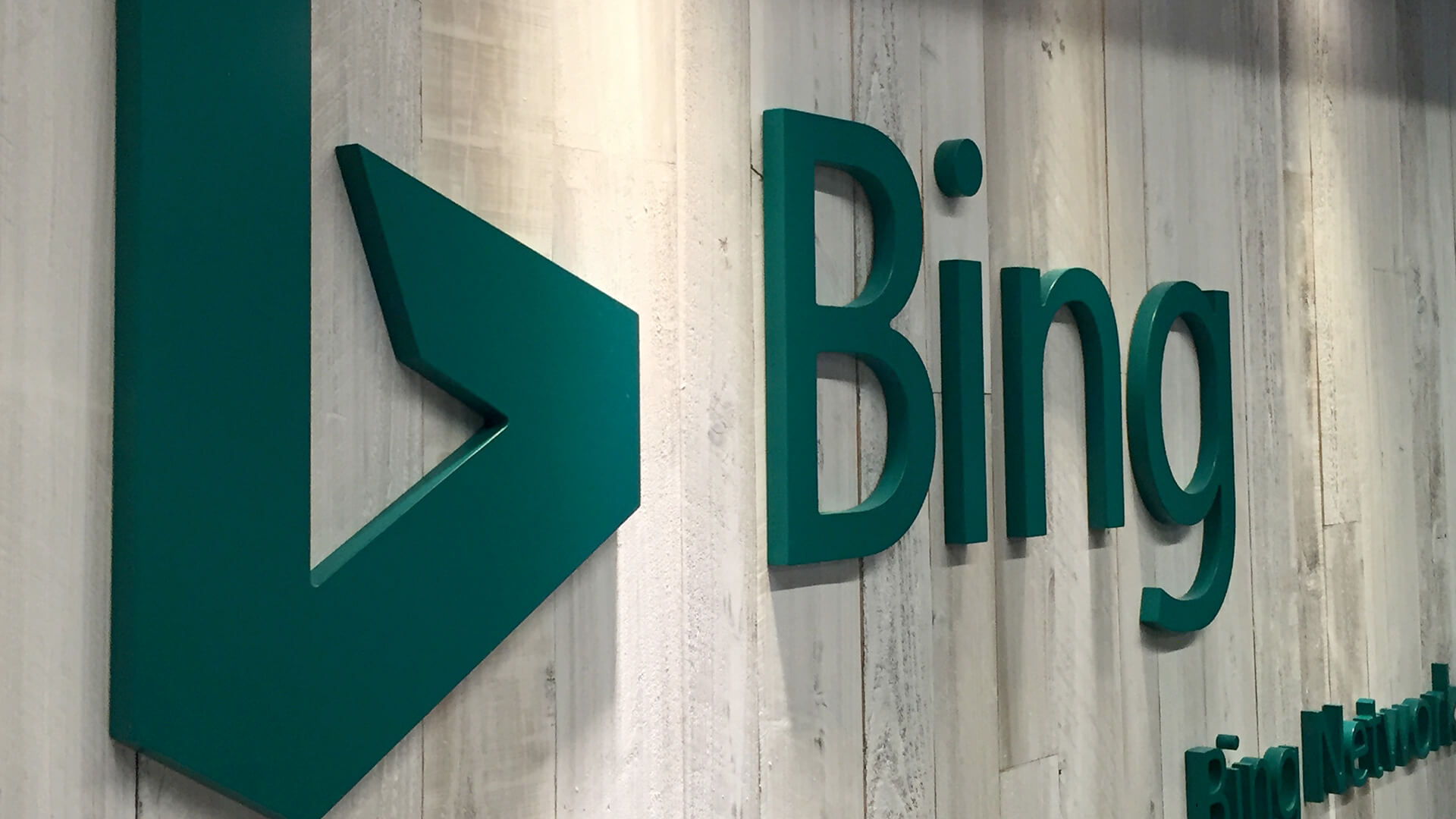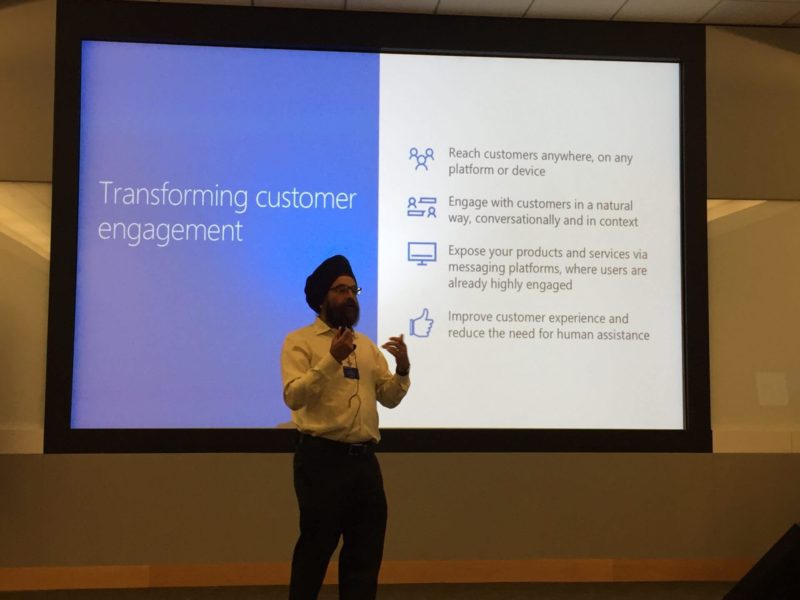Microsoft execs share plans for making Bing ‘pervasive,’ say search is about to become very different
At an event in Redmond, Microsoft shared its vision of the future in which Bing is at the heart of day-to-day experiences without users even realizing it.
In a day of high-level presentations that included Microsoft’s global branding initiatives, HoloLens and the future of an algorithm-driven economy, Bing Ads executives conveyed the strengthening embrace of Bing across Microsoft. No longer a sideline money loser, Bing is now a profitable, rich data source for the company. Bing has been bundled into flagship Microsoft products like Office and Xbox and is being positioned at the forefront of the machine learning and artificial intelligence developments Microsoft is betting on.
At the fourth annual Bing Ads Next event in Redmond on Thursday, Rik van der Kooi, corporate vice president of the Microsoft Advertising Business Group, built on his declaration last year that Microsoft was “all in on search.” Calling Bing an “intelligence fabric” that is now woven into Windows 10, Xbox, Cortana and other products, van der Kooi said “Bing is going to be pervasive.” Beyond the Microsoft ecosystem, Bing is also the search engine for Apple’s Siri and Amazon assistant devices, and more partnerships are expected to come. There will be integrations with LinkedIn after the acquisition deal by Microsoft closes next year.
The future of search
“When we think about the future, search is going to change pretty dramatically,” said van der Kooi, adding, “We are going to collectively define with our customers what the new business models are when people talk to their devices and we go beyond 10 blue links on a page.”
Gurpeet Singh Pall, partner director of program management for Bing and Cortana, said, “The future of Bing is going beyond the search box to a personal, pervasive and predictive experience in which it might not be obvious users are even interacting with the search engine. Consider product search on the Hololens in which users test couches from a product catalog looks in their living rooms, for example.”
Current initiatives
While most of the corporate presentations focused on the somewhat-near-future rather than present-day feature development for Bing Ads, the company did touch on a few current initiatives:
Dynamic native ads pilot: Bing Ads introduced native ads on MSN.com inventory over a year ago. A pilot for dynamic native ads is now running with a small set of advertisers and publishers. The aim is to build what the company is calling an Intent Network to differentiate it from standard display networks — and more specifically, the expansive Google Display Network. Bing’s focus is on developing a curated network of sites around key commercial verticals such as automotive and financial services. The company is planning to make more announcements about the intent network in the beginning of next year. Ads are matched using a variety of dynamic signals from publishers and advertisers and Microsoft data that users opt in to share.”
Growing mobile share: According to comScore data, the Bing Network has grown to 31.9 percent of US search share on desktop. On mobile, however, Bing’s share is minuscule. Bing Ads executives acknowledge they can’t grow mobile share on the backs of Microsoft’s first-party platforms alone. “We think of it first in terms of partnerships like Apple and think about Bing in those kinds of partnerships for mobile supply opportunities,” said Steve Sirich, general manager, marketing for search advertising. “We will continue to build experiences like the Cortana apps and Bing apps, but the first priority is on building the third-party supply chain and partnerships.”
Machine Learning & AI Will Underlie Everything
From a vision-of-the-future perspective, Microsoft shared updates on several products that are further away in terms of having direct practical applications for advertisers:
Decision Service: Microsoft introduced its testing and optimization product called Decision Service to the audience. Currently, it is only being deployed with a small set of customers in Azure, but Decision Service has use cases for content optimization, ad optimization, product recommendation optimization, pricing optimization and so on. From an ads standpoint, Decision Service could be layered on top of an ad server or eventually integrate directly with Bing Ads.
Cortana & Conversation As a Platform (CAP): This is where Microsoft sees the new opportunity for developers, where bots are the monetization drivers for developers, not apps. “You can interact more naturally and search without searching” because bots surface information to you in a predictive manner, said Singh Pall. Cortana, Microsoft’s digital assistant, is on Skype, Office, Outlook and Windows 10 and is powered by Bing. Microsoft says Cortana now has 133 million monthly users. The Cortana SDK is being released soon, and the developer focus will be on improving personal productivity. Singh Pall spoke of Bing and Cortana integrations with third-party APIs, noting 2,000 developers have signed up to use Microsoft’s augmented services.
“What we are aiming for with Cortana is native skills that will continue to grow, but the third parties are going to be integrating skills into it,” said Singh Pall. “When it comes to work productivity, Microsoft has the context that a lot of others don’t have. We will bring more into the fold to enhance that and grow the life aspect of it.”
HoloLens: Margeau Veenstra, who oversees HoloLens commercial strategy and Windows experiences at Microsoft, said that consumer applications for the augmented reality device are not far off. “It will rapidly become the expected way to engage with content and become part of our everyday device experience,” she expects. For example, Microsoft is working with Houzz to help users see how furniture options can look in their homes.
A new vision for digital success
In this new framework in which bots replace apps, machine learning powers our engagement with technology (and that includes ad management and optimization) and artificial intelligence fulfills its promise to increase productivity, the days when businesses base their digital presence on a website are numbered. The question now, says Microsoft, is: How do you take what you’ve already invested in — apps, websites — and shift? Businesses need to meet customers anywhere and cannot expect users to leave wherever they are to go to your website
“Going forward, it is going to be about whether you are helping me be more productive. Consumers don’t mind paying when there is convenience included in the process,” said Singh Pall in discussing the new paradigm of customer engagement.
This vision is reflected in Bing’s own plans. When asked about driving mobile share and engagement, David Pann, general manager for search advertising, explained in an interview on Thursday, “Our strategy is we have to be everywhere and have a multi-pronged approach instead of just a singular focus of getting the default on devices. We also realize mobile experiences are going to dramatically evolve over the next three to five years to the extent that consumer intent won’t be typed in — it may be location-based, it may be understanding what’s on your schedule. The notion of search could move to a more passive approach. We don’t know, so our strategy is we have to try it all … We believe that this multi-pronged approach will be a way to aggregate sufficient mobile supply that is interesting and will provide great sticky experiences for consumers and great experiences for advertisers.”
Given Microsoft’s “be everywhere and reward productivity first” viewpoint and the rise of machine learning and artificial intelligence, one can begin to envision a significantly more complex ad auction that can ingest and react to a wide ranging and ever-changing set of signals. This is the future in which humans efforts at optimization can’t possibly keep up. Microsoft wants to make sure we don’t have to. Bing Ads itself was conspicuously missing from most of these discussions, however. The platform has come a long way, but it still has challenges that keep more advertisers from adopting it and current advertisers from spending more with it. This vision seems to demand more than block-and-tackle improvements — instead, a wholesale rebuilding of the Bing Ads platform that puts it on the leading edge of this new near-future.
Contributing authors are invited to create content for Search Engine Land and are chosen for their expertise and contribution to the search community. Our contributors work under the oversight of the editorial staff and contributions are checked for quality and relevance to our readers. The opinions they express are their own.
Related stories
New on Search Engine Land

